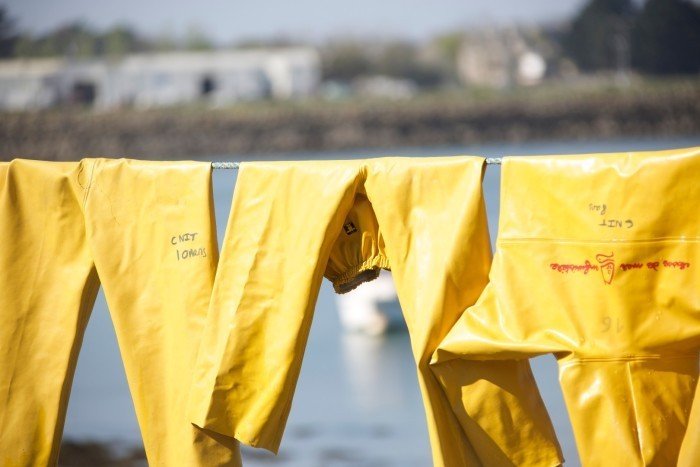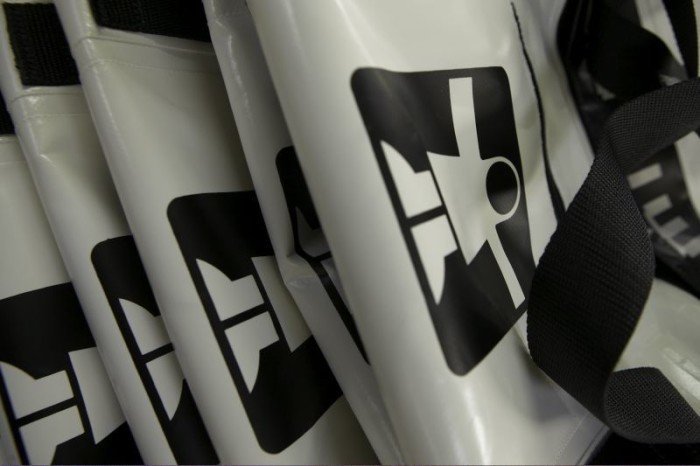Care of your clothing:
Breathable fabrics: Dremtech+
Salt is the number one enemy of breathable and water repellent fabrics, so they require special care!
- Rinse your equipment in warm fresh water every time, after every sailing trip, and store it in a dry place.
- The outer side of the textile has been treated to make it water repellent and hydrophobic. However, UVs, bad weather and washes can alter the effects of this treatment over time, resulting in a cold to the touch sensation and the feeling that the clothing is no longer waterproof. This is due to humidity which rises and condensates behind the membrane. You need to restore its water repellence! Regular ironing of the outer fabric at a low temperature will regenerate the waterproofing to 80%.You must take action as soon as the outer fabric begins to be impregnated with water.
- After prolonged used, this treatment needs to be supplemented by spraying with a waterproofing aerosol. These repeated treatments guaranteed your clothing's effectiveness, comfort and long life. We recommend you use Nikwax Products.
- The waterproof and breathable membrane does not require maintenance. However the waterproof strips should be monitored in the event of localized wear, particularly in places where there is a lot of rubbing. Our After Sales Service can restore them.
- The tumble-drier can be used for breathable fabrics, but we do not recommend it. Machine washable, at a maximum of 30°, on a wool cycle with no fabric conditioner. Do not spin. It is best to dry on a hanger.
Coated fabrics: Cap Coz, Nylpeche, etc.
PVC textiles can be machine-washed at a maximum of 30°, on a wool cycle, with no fabric conditioner and no spin, and should be left to drip dry on your washing line or a hanger. PVC fabrics can also be washed by hand in warm water using soap and rubbing lightly.
- Never use the tumble-drier.
- Solvents, fabric conditioners, and bleach (even diluted!) and similar products damage the coating or impregnation and may have irremediable consequences on the fabric's effectiveness.
- Tar.
- Some forms of grease.
- Various inks.
- Unfixed colours (in certain conditions - heat, humidity – colours from other clothing or accessories can “migrate” onto your clothing). In such cases, these articles or faulty colours are the responsibility of the manufacturer!
Only immediate action can remove or reduce the stains: using a greasy substance (oil, fat) lightly applied with a sponge or a cloth.
Fleece and fleece undergarments:
To keep your fleeces looking good for a long time, all you need to do is take a few precautions, such as washing them inside-out. Avoid over-filling the washing machine. Pay attention to the temperature indicated on the label: 30° maximum. Use the “wool” program. Do not spin or use a very light spin. Do not use fabric conditioner. Do not use a tumble-drier or send to the dry cleaner's. Dry flat or drip dry for heavier fleeces.
Zip-fastener care:
-
A quick trick for freeing a zip slider jammed with salt: soak it in warm water (which dissolves the amalgams) then gently slide the slider the full length of the zip to remove it and reposition it. This will prevent the zip’s teeth from breaking.
-
We advise you to rinse your clothing in fresh water as soon as you get back from the sea. This will also reduce the feeling of weight and humidity when next used.
- Zip your clothing up half-way when storing your clothing. This precaution will prevent the slider of your zip from sticking due to salt.








.png)